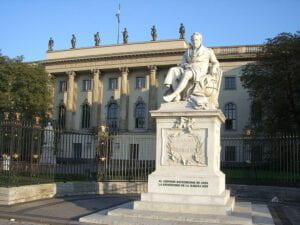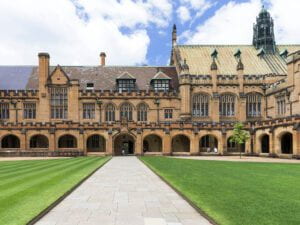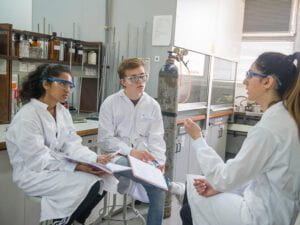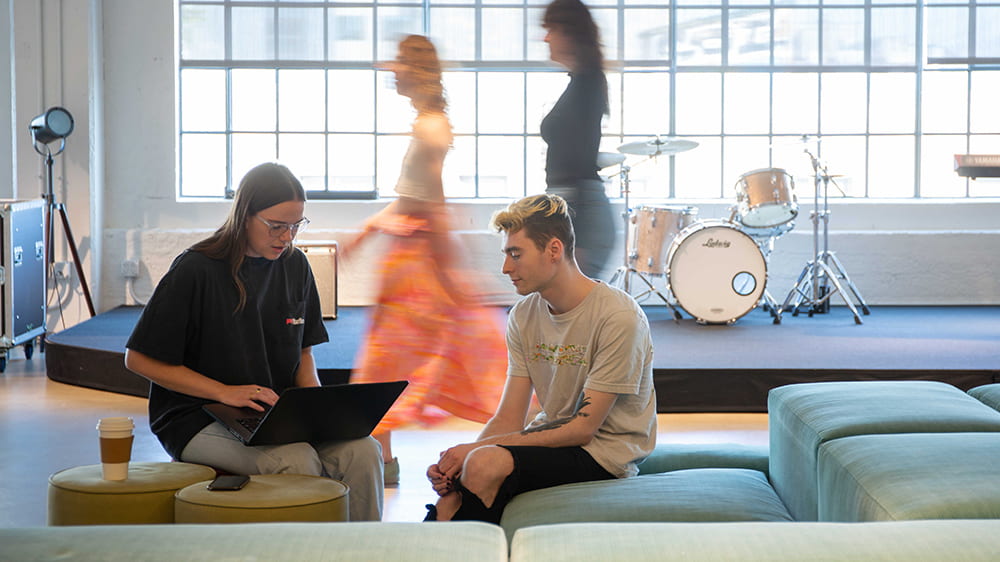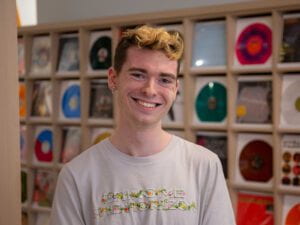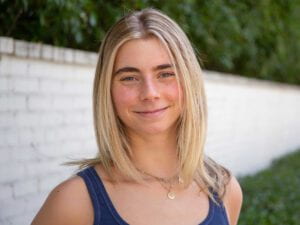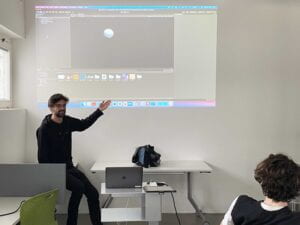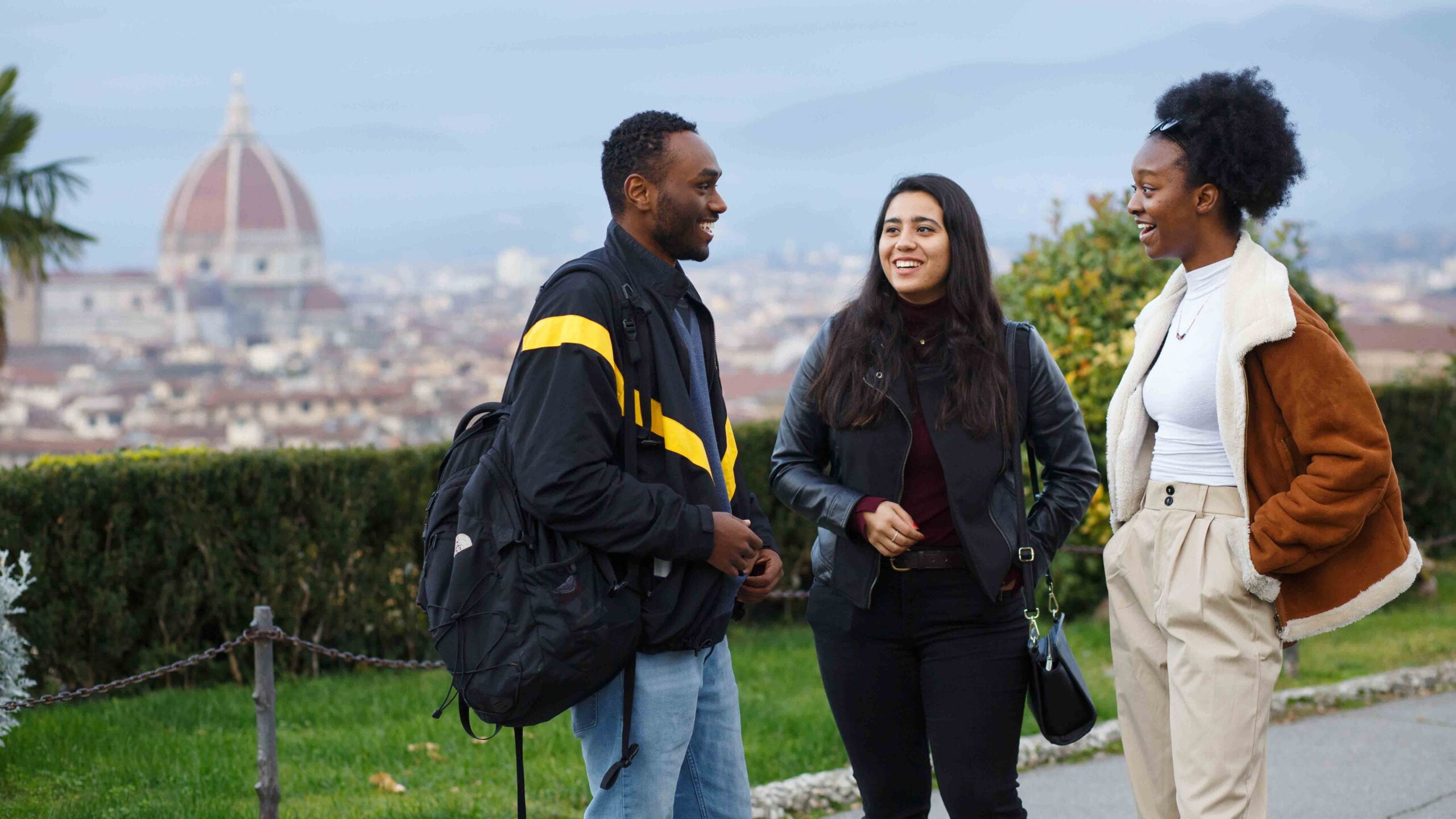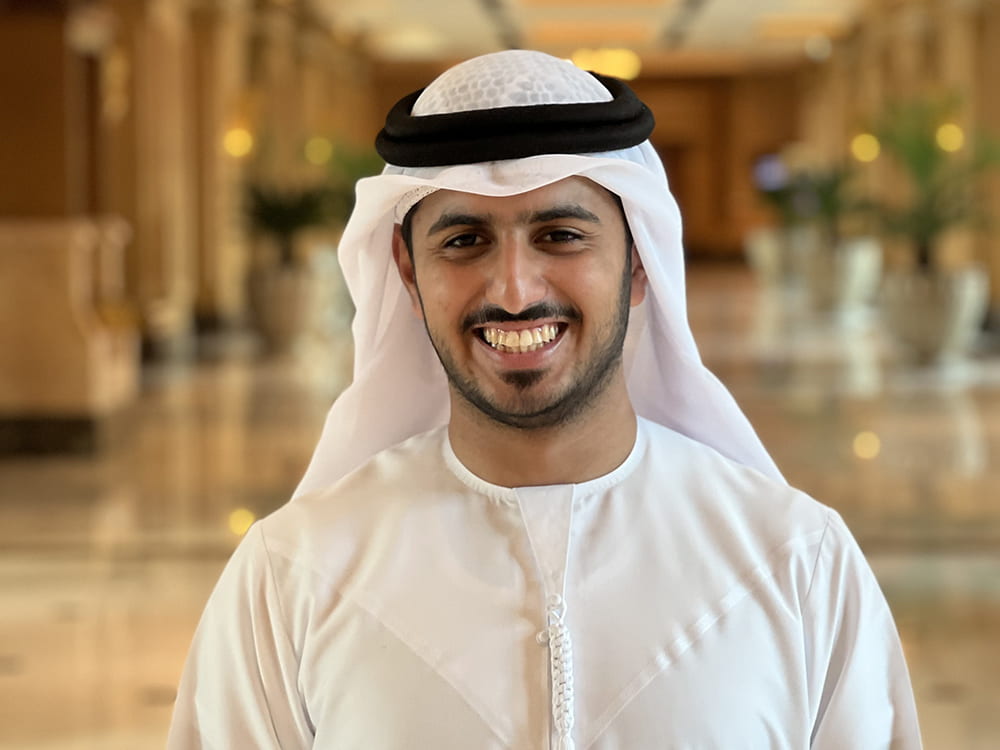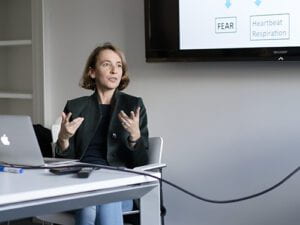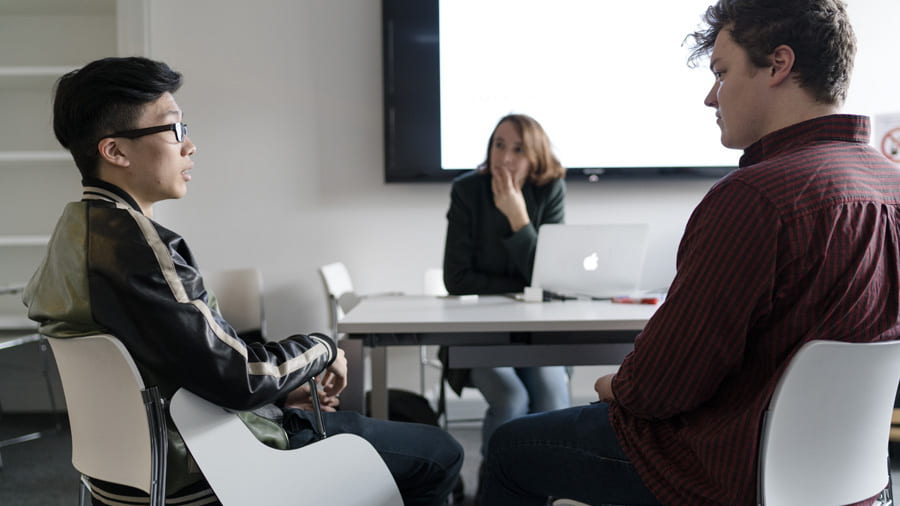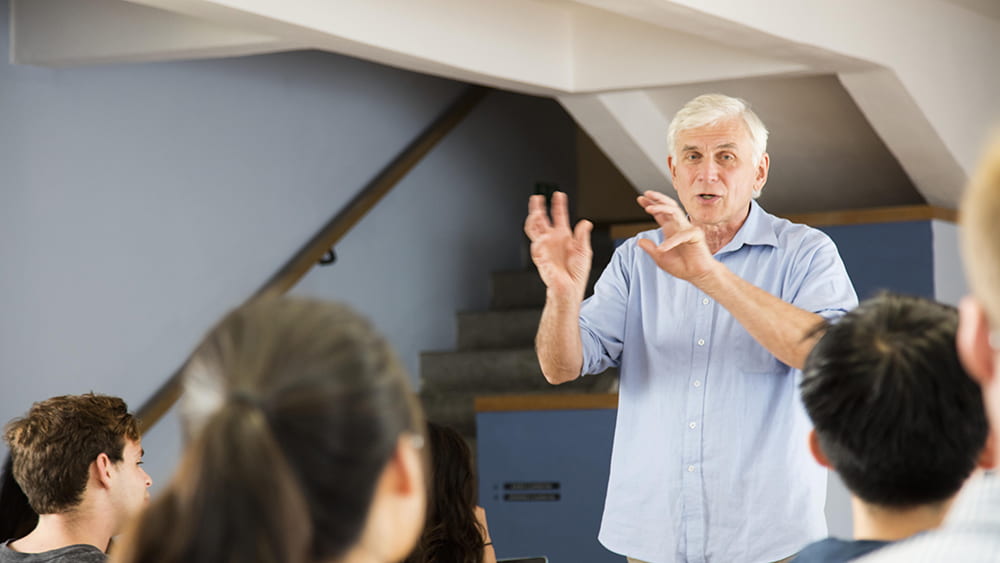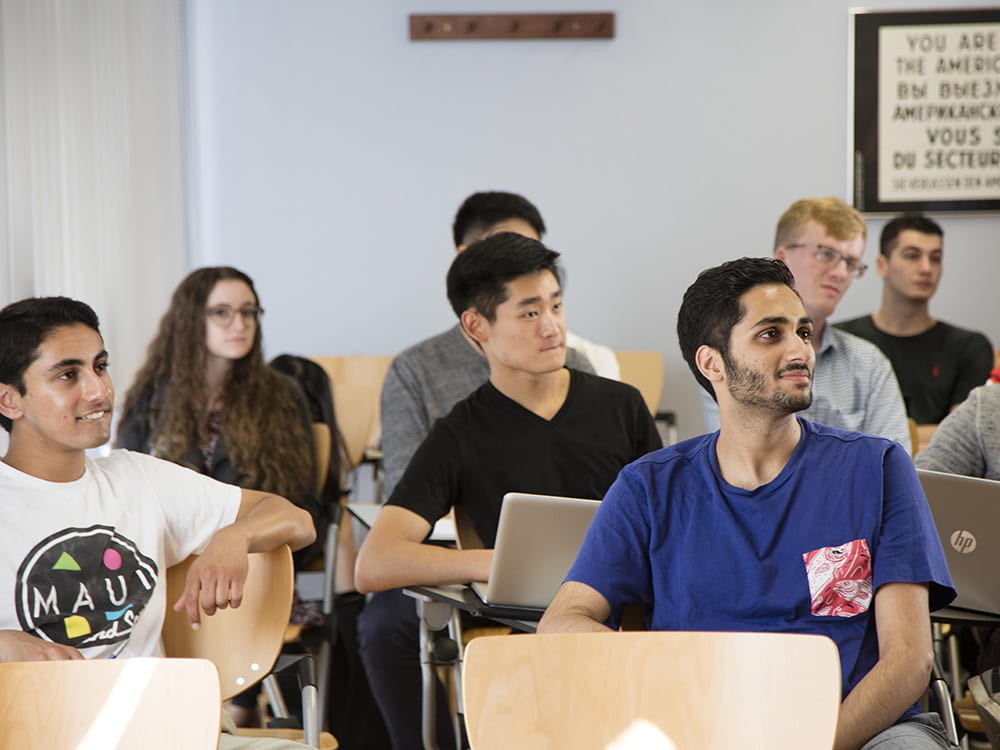Students not only gain perspective and knowledge from time spent away from their home campus but also benefit from NYU partnerships with local institutions in the University’s global network. With one partnership that began before the global site itself was founded and another established over 50 years ago, it’s clear these relationships are invaluable to NYU research, scholarship, and community.
NYU Berlin
NYU Berlin’s first agreement with Humboldt-Universität zu Berlin was in 1995, and the partnership remains as strong as ever. Today, students can enroll in courses at Humboldt and access its library. In addition to its partnership with Humboldt-Universität, NYU Berlin has an impressive record of establishing—and continuing—student and faculty exchange programs with other German universities. For example, in 1995 NYU established an agreement with the Freie Universität Berlin. Over 20 years later, in 2019, Freie Universität hosted Radha S. Hegde, NYU professor of media, culture, and communication, as the Dahlem International Network Professor in Gender Studies to teach two seminars.
NYU London
Before NYU London was established in 1999, the University held a partnership with the Royal Academy of Dramatic Art (RADA) for NYU Tisch School of the Arts students. Even as course offerings and programming expanded into the NYU London we know today, that relationship has remained steadfast for over 20 years. Each semester, a small group of NYU students audition for placement in RADA’s Shakespeare in Performance program. Students learn all aspects of performing Shakespeare as they work with a variety of RADA instructors. The intensive program culminates with the performance of one of Shakespeare’s plays. A more recent partnership with the National Film and Television School was established in 2018, with the first NYU students taking Directing the Actor: London in 2019. At the end of the course, students shoot and direct professional actors on a soundstage.
NYU Paris
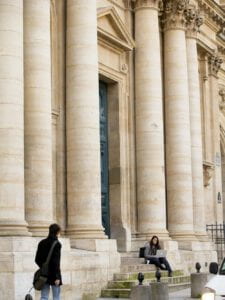
The Sorbonne building houses various Parisian universities including the Université Paris 1 Panthéon-Sorbonne
Over the years, NYU Paris has established a number of agreements with local universities, including Université Paris 1 Panthéon-Sorbonne, Université Paris Cité, Université Sorbonne Nouvelle, and Université Paris Sciences et Lettres. These agreements allow NYU Paris students to take courses at these institutions, while Paris-based students have the opportunity to study at NYU’s campus in New York City. The relationship between NYU and Université Paris 1 Panthéon-Sorbonne dates back to the founding of NYU Paris in 1969. Currently, the agreement allows NYU Paris students with advanced proficiency in French to take Paris 1 Panthéon-Sorbonne classes in subjects ranging from art and history to philosophy and mathematics. In addition, the University’s partnership with Université Sorbonne Nouvelle dates back almost as long—to 1975. Eligible NYU Paris students can take courses there in literature, cinema, theatre, and media studies.
NYU Sydney
In November 2021 NYU established a new partnership with the oldest university in Australia, the University of Sydney (USYD). Through the partnership, NYU Sydney students have all the benefits of being a full-time USYD student: living on campus, enrolling in USYD courses, and participating in the Industry and Community Projects Units (ICPUs). ICPUs pair students with an industry partner and academic lead to work on real issues that industry, community, and government organizations encounter. And the partnership benefits are reciprocal—USYD students have the opportunity to enroll in Sydney-based courses taught by NYU instructors or spend a semester abroad at NYU’s campus in New York City or one of NYU’s global academic sites.
NYU Tel Aviv
A partnership with Tel Aviv University (TAU) further enriches students taking science courses at NYU Tel Aviv. TAU, Israel’s largest university, is just a short distance from the NYU global academic center. While NYU Tel Aviv offers science courses, including Organic Chemistry II and General Physics II, TAU offers the lab sections for those courses.
In addition, undergraduate students can intern in a research lab through NYU Tel Aviv’s biology internships at TAU. Depending on the type of research conducted at each lab, students may learn different techniques like cell culture, gel electrophoresis, and microscopy. During the internship, students take part in the experimentation, research, and writing processes with at least one PhD student. What’s more, TAU students can also take advantage of NYU’s resources in return by enrolling at one of the University’s global academic sites for a semester.
